Research on Flood Risk Control Methods and Reservoir Flood Control Operation Oriented towards Floodwater Utilization
Abstract
:1. Introduction
2. Methodology
2.1. The Identification of The Main Flood Risk Factors
2.2. An Uncertainty Analysis of The Main Flood Risk Factors
2.2.1. The Uncertainty of Reservoir Inflows
2.2.2. The Uncertainty of Interval Floods
2.2.3. The Uncertainty of Forecast Error
2.3. The Development of a Risk Analysis Model
2.4. Flood Risk Control Method Oriented towards Floodwater Utilization
2.5. Risk and Benefit Assessment
3. Case Study
4. Results
4.1. Simulation of Reservoir Inflow
4.2. Simulation of Interval Flood
4.3. The Influence of Flood Forecast Error
4.4. A Flood Risk Control Map and Flood Risk Control Method Oriented toward Floodwater Utilization
4.5. The Risks and Benefits of Floodwater Utilization
5. Discussion
6. Conclusions
- (1)
- The dynamic control domains of the FLWL under various acceptable risk ratios and flood risk control maps were obtained, and the flood risk control method could improve floodwater utilization by realizing the DC-FLWL under acceptable risk ratios.
- (2)
- The potential of raising the FLWL was studied by using the established risk analysis model. The results show that the risk ratio increases as the FLWL rises. The FLWL could be raised by 1.00 m based on the present FLWL during the summer and autumn wet seasons under the absence of flood risk.
- (3)
- The assessment criteria, namely the HWL, ASC, and SCT values, were used to quantitatively measure the risks and benefits of floodwater utilization. The flood risk is within an acceptable range, and the available flood resources in the wet and dry seasons could be increased by about 10.68% and 8.13%, respectively, which could effectively improve the floodwater utilization and contribute to water supply safety.
Author Contributions
Funding
Data Availability Statement
Acknowledgments
Conflicts of Interest
References
- Garrote, J.; Pena, E.; Diez-Herrero, A. Probabilistic Flood Hazard Maps from Monte Carlo Derived Peak Flow Values—An Application to Flood Risk Management in Zamora City (Spain). Appl. Sci. 2021, 11, 6629. [Google Scholar] [CrossRef]
- Zhou, L.; Kang, L. A Comparative Analysis of Multiple Machine Learning Methods for Flood Routing in the Yangtze River. Water 2023, 15, 1556. [Google Scholar] [CrossRef]
- Wen, Y.; Zhou, L.; Kang, L.; Chen, H.; Guo, J. Drought risk analysis based on multivariate copula function in Henan Province, China. Geomat. Nat. Hazards Risk 2023, 14, 2223344. [Google Scholar] [CrossRef]
- Fadel, A.W.; Marques, G.F.; Goldenfum, J.A.; Medellín-Azuara, J.; Tilmant, A. Full Flood Cost: Insights from a Risk Analysis Perspective. J. Environ. Eng. 2018, 144, 04018071. [Google Scholar] [CrossRef]
- Ding, W.; Zhang, C.; Peng, Y.; Zeng, R.; Zhou, H.; Cai, X. An analytical framework for flood water conservation considering forecast uncertainty and acceptable risk. Water Resour. Res. 2015, 51, 4702–4726. [Google Scholar] [CrossRef]
- Li, Y.; Guo, S.L.; Quo, J.L.; Wang, Y.; Li, T.Y.; Chen, J.H. Deriving the optimal refill rule for multi-purpose reservoir considering flood control risk. J. Hydro-Environ. Res. 2014, 8, 248–259. [Google Scholar] [CrossRef]
- Liu, G.; Zhou, J.; Yang, Y.; Ke, S.; Mo, L.; Wang, Y.; Xiao, X. Risks Analysis of Discarding Water in Power Generation Process of Hydropower Station. IEEE Access 2020, 8, 132703–132720. [Google Scholar] [CrossRef]
- Zhang, J.; Min, Y.W.; Feng, B.F.; Duan, W.X. Research and Application of Key Technologies for Dynamic Control of Reservoir Water Level in Flood Season. Water 2021, 13, 3576. [Google Scholar] [CrossRef]
- Ding, W.; Zhang, C.; Cai, X.M.; Li, Y.; Zhou, H.C. Multiobjective hedging rules for flood water conservation. Water Resour. Res. 2017, 53, 1963–1981. [Google Scholar] [CrossRef]
- Tan, Q.F.; Wang, X.; Liu, P.; Lei, X.H.; Cai, S.Y.; Wang, H.; Ji, Y. The Dynamic Control Bound of Flood Limited Water Level Considering Capacity Compensation Regulation and Flood Spatial Pattern Uncertainty. Water Resour. Manag. 2017, 31, 143–158. [Google Scholar] [CrossRef]
- Zhou, Y.L.; Guo, S.L.; Chang, F.J.; Liu, P.; Chen, A.B. Methodology that improves water utilization and hydropower generation without increasing flood risk in mega cascade reservoirs. Energy 2018, 143, 785–796. [Google Scholar] [CrossRef]
- Zhang, Z.B.; He, X.Y.; Geng, S.M.; Zhang, S.H.; Ding, L.Q.; Kan, G.Y.; Li, H.; Jiang, X.M. An Improved “Dynamic Control Operation Module” for Cascade Reservoirs. Water Resour. Manag. 2018, 32, 449–464. [Google Scholar] [CrossRef]
- Gong, Y.; Liu, P.; Cheng, L.; Chen, G.Y.; Zhou, Y.L.; Zhang, X.Q.; Xu, W.F. Determining dynamic water level control boundaries for a multi-reservoir system during flood seasons with considering channel storage. J. Flood Risk Manag. 2020, 13, 17. [Google Scholar] [CrossRef]
- Ning, Y.W.; Ding, W.; Liang, G.H.; He, B.; Zhou, H.C. An Analytical Risk Analysis Method for Reservoir Flood Control Operation Considering Forecast Information. Water Resour. Manag. 2021, 35, 2079–2099. [Google Scholar] [CrossRef]
- Mu, Z.; Ai, X.; Ding, J.; Huang, K.; Chen, S.; Guo, J.; Dong, Z. Risk Analysis of Dynamic Water Level Setting of Reservoir in Flood Season Based on Multi-index. Water Resour. Manag. 2022, 36, 3067–3086. [Google Scholar] [CrossRef]
- Pan, J.B.; Xie, Y.; Liu, M.; Gao, Z.; Gao, Z.Z.; Xue, B.W. Dynamic Control of Water Level in Flood Limited Reservoir Based on Intelligent Calculation. Math. Probl. Eng. 2022, 2022, 10. [Google Scholar] [CrossRef]
- Lu, Q.; Zhong, P.; Xu, B.; Huang, X.; Zhu, F.; Wang, H.; Ma, Y. Multi-objective risk analysis for flood control operation of a complex reservoir system under multiple time-space correlated uncertainties. J. Hydrol. 2022, 606, 127419. [Google Scholar] [CrossRef]
- Du, H.; Wang, Z.; Yin, J. Analysis of flood control risk in floodwater utilization considering the uncertainty of flood volume and peak. Front. Earth Sci. 2023, 11, 1196903. [Google Scholar] [CrossRef]
- Chen, J.; Zhong, P.A.; Zhang, W.G.; Zhu, F.L.; Zhang, Y. Improved Risk-Assessment Model for Real-Time Reservoir Flood-Control Operation. J. Water Resour. Plan. Manag. 2020, 146, 0001174. [Google Scholar] [CrossRef]
- Winter, B.; Schneeberger, K.; Huttenlau, M.; Stotter, J. Sources of uncertainty in a probabilistic flood risk model. Nat. Hazards 2018, 91, 431–446. [Google Scholar] [CrossRef]
- Peng, Y.; Chen, K.; Yan, H.; Yu, X. Improving Flood-Risk Analysis for Confluence Flooding Control Downstream Using Copula Monte Carlo Method. J. Hydrol. Eng. 2017, 22, 04017018. [Google Scholar] [CrossRef]
- Wang, Q.S.; Zhou, J.Z.; Dai, L.; Huang, K.D.; Zha, G. Risk assessment of multireservoir joint flood control system under multiple uncertainties. J. Flood Risk Manag. 2021, 18, e12740. [Google Scholar] [CrossRef]
- Barría, P.; Chadwick, C.; Ocampo-Melgar, A.; Galleguillos, M.; Garreaud, R.; Díaz-Vasconcellos, R.; Poblete, D.; Rubio-Álvarez, E.; Poblete-Caballero, D. Water management or megadrought: What caused the Chilean Aculeo Lake drying? Reg. Environ. Change 2021, 21, 19. [Google Scholar] [CrossRef]
- Valencia, D.; Schakke, J.C. Disaggregation processes in stochastic hydrology. Water Resour. Res. 1973, 9, 580–585. [Google Scholar]
- Chen, J.; Zhong, P.; Zhao, Y.; Xu, B. Risk analysis for the downstream control section in the real-time flood control operation of a reservoir. Stoch. Environ. Res. Risk Assess. 2015, 29, 1303–1315. [Google Scholar] [CrossRef]
- Fan, Y.R.; Huang, W.W.; Huang, G.H.; Li, Y.P.; Huang, K.; Li, Z. Hydrologic risk analysis in the Yangtze River basin through coupling Gaussian mixtures into copulas. Adv. Water Resour. 2016, 88, 170–185. [Google Scholar] [CrossRef]
- Kang, L.; Jiang, S. Bivariate Frequency Analysis of Hydrological Drought Using a Nonstationary Standardized Streamflow Index in the Yangtze River. J. Hydrol. Eng. 2019, 24, 05018031. [Google Scholar] [CrossRef]
- Li, W.; Zhou, J.; Yao, X.; Feng, K.; Luo, C.; Sun, N. Flood Hazard Analysis Based on Copula Connect Function. Nat. Hazards Rev. 2023, 24, 04022041. [Google Scholar] [CrossRef]
- Lu, Q.; Zhong, P.-a.; Xu, B.; Zhu, F.; Ma, Y.; Wang, H.; Xu, S. Risk analysis for reservoir flood control operation considering two-dimensional uncertainties based on Bayesian network. J. Hydrol. 2020, 589, 125353. [Google Scholar] [CrossRef]
- Dai, L.; Zhou, J.; Chen, L.; Huang, K.; Wang, Q.; Zha, G. Flood-risk analysis based on a stochastic differential equation method. J. Flood Risk Manag. 2019, 12, e12515. [Google Scholar] [CrossRef]
- Chen, G.; Lin, H.; Hu, H.; Yan, Y.; Wan, Y.; Xiao, T.; Peng, Y. Research on the Measurement of Ship’s Tank Capacity Based on the Monte Carlo Method. Chem. Technol. Fuels Oils 2022, 58, 232–236. [Google Scholar] [CrossRef]
- Kang, L.; He, X. Risk analysis of rich–poor rainfall encounter in inter-basin water transfer projects based on Bayesian networks. Water Supply 2011, 11, 451–459. [Google Scholar] [CrossRef]
- Chang, J.; Guo, A.; Du, H.; Wang, Y. Floodwater utilization for cascade reservoirs based on dynamic control of seasonal flood control limit levels. Environ. Earth Sci. 2017, 76, 260. [Google Scholar] [CrossRef]
- Yang, Z.; Huang, X.; Liu, J.; Fang, G. Optimal Operation of Floodwater Resources Utilization of Lakes in South-to-North Water Transfer Eastern Route Project. Sustainability 2021, 13, 4857. [Google Scholar] [CrossRef]
- Wang, K.; Wang, Z.; Xu, J.; Mo, Y.; Cheng, L.; Bai, Y.; Du, H.; Liu, K. Floodwater utilization potential assessment of China based on improved conceptual model and multi-reservoir basin assessment method. J. Hydrol. 2023, 625, 129921. [Google Scholar] [CrossRef]
- Li, X.; Guo, S.; Liu, P.; Chen, G. Dynamic control of flood limited water level for reservoir operation by considering inflow uncertainty. J. Hydrol. 2010, 391, 124–132. [Google Scholar] [CrossRef]
- Ye, A.; Wang, Z.; Zhang, L.; Wang, L.; Wang, K. Assessment approach to the floodwater utilization potential of a basin and an empirical analysis from China. Environ. Earth Sci. 2019, 78, 52. [Google Scholar] [CrossRef]
- Xie, A.; Liu, P.; Guo, S.; Zhang, X.; Jiang, H.; Yang, G. Optimal Design of Seasonal Flood Limited Water Levels by Jointing Operation of the Reservoir and Floodplains. Water Resour. Manag. 2018, 32, 179–193. [Google Scholar] [CrossRef]
- Lu, Q.; Zhong, P.-a.; Xu, B.; Zhu, F.; Huang, X.; Wang, H.; Ma, Y. Stochastic programming for floodwater utilization of a complex multi-reservoir system considering risk constraints. J. Hydrol. 2021, 599, 126388. [Google Scholar] [CrossRef]
- Wang, K.; Wang, Z.; Liu, K.; Du, H.; Mo, Y.; Wang, M.; Jin, G.; Li, L. Assessing the floodwater utilization potential in a reservoir-controlled watershed: A novel method considering engineering regulations and an empirical case from China. Ecol. Inform. 2022, 68, 101581. [Google Scholar] [CrossRef]

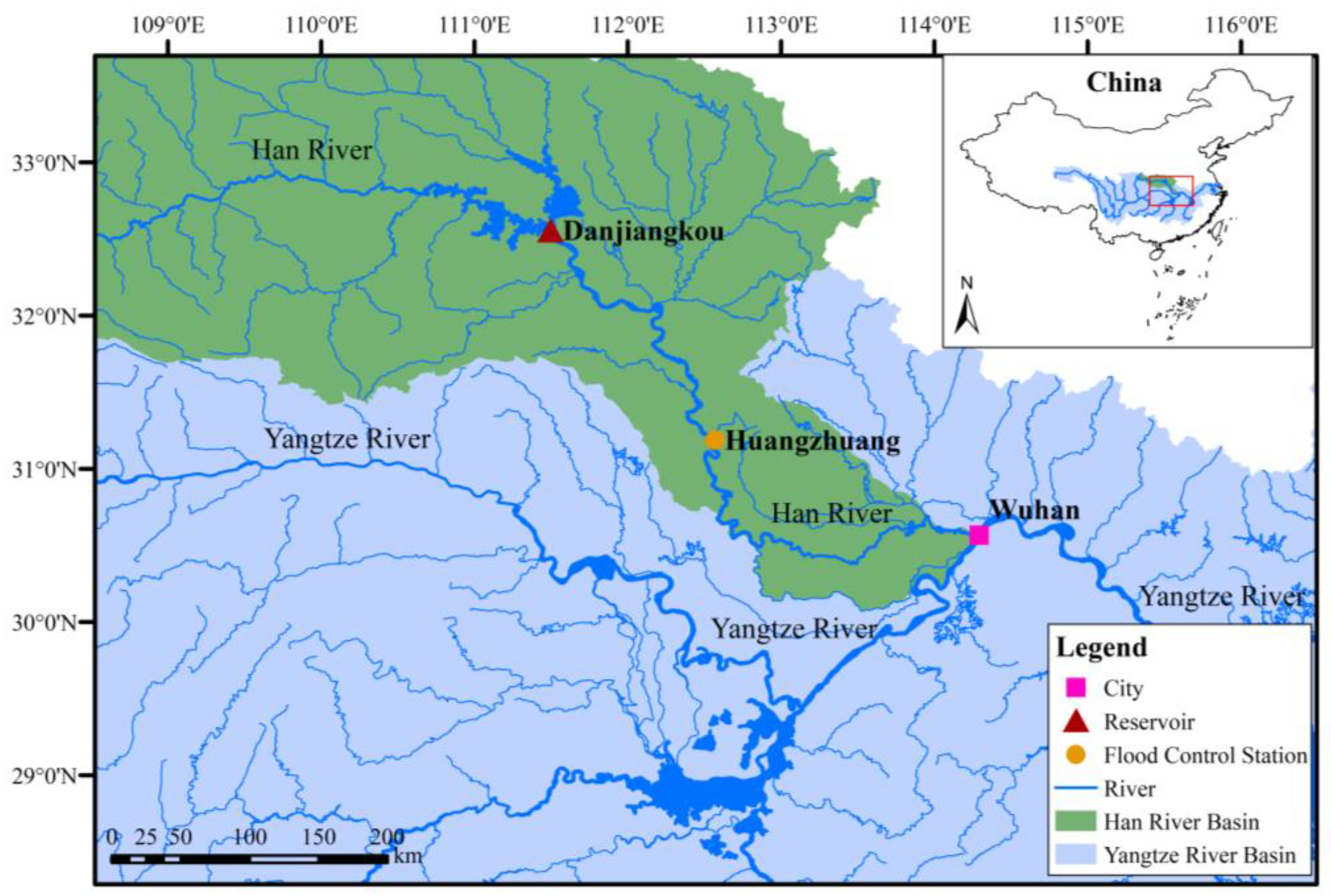
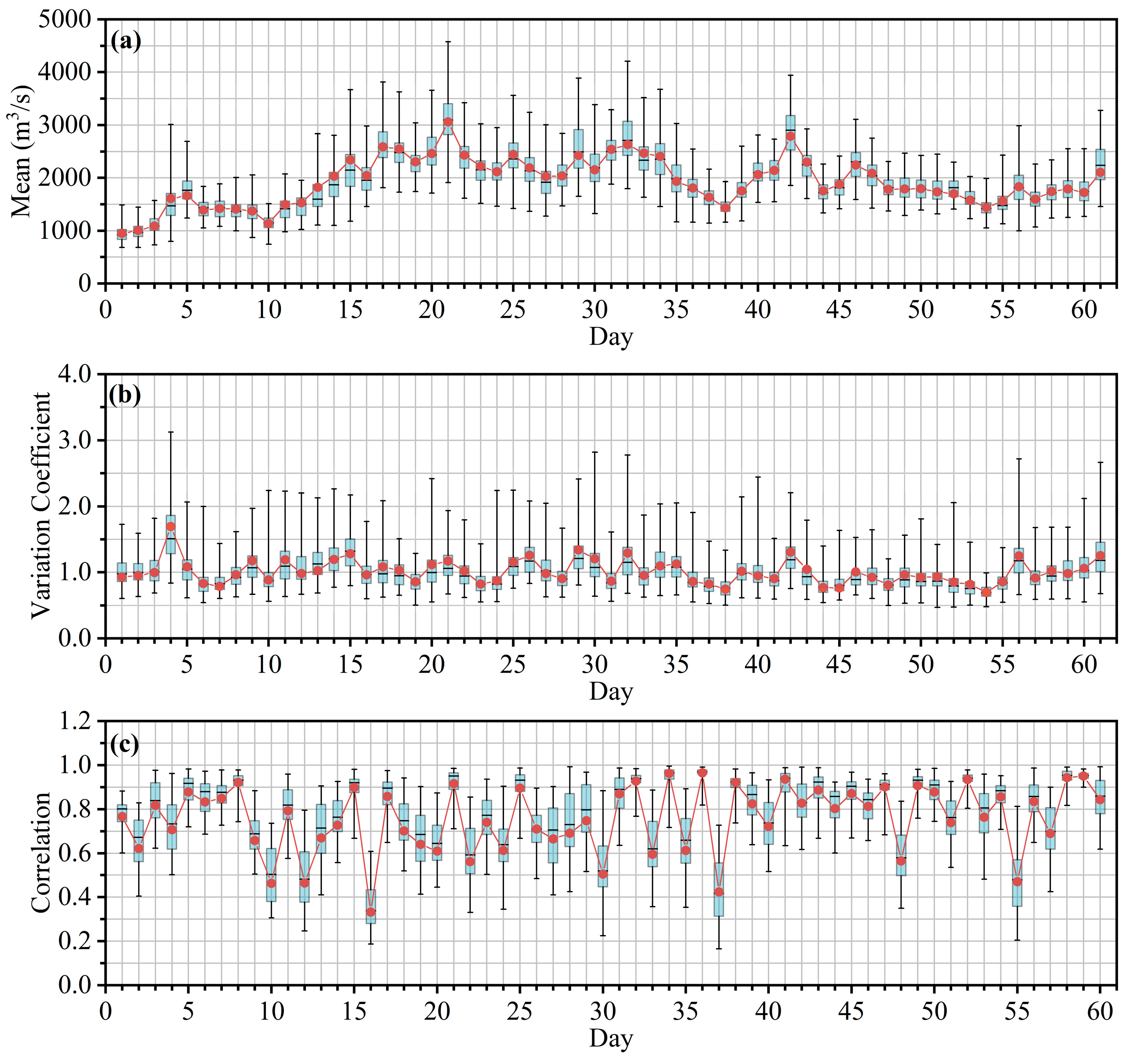
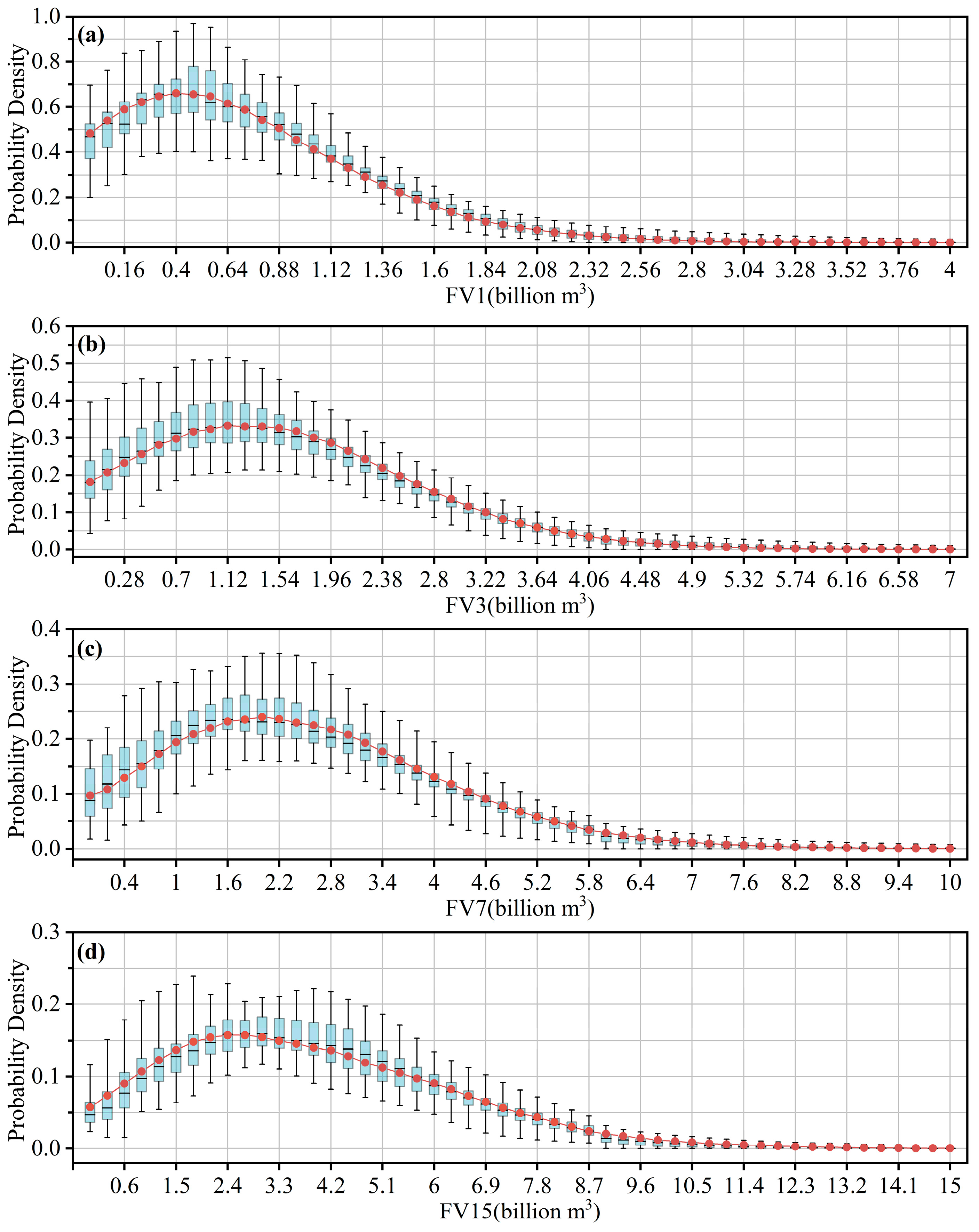

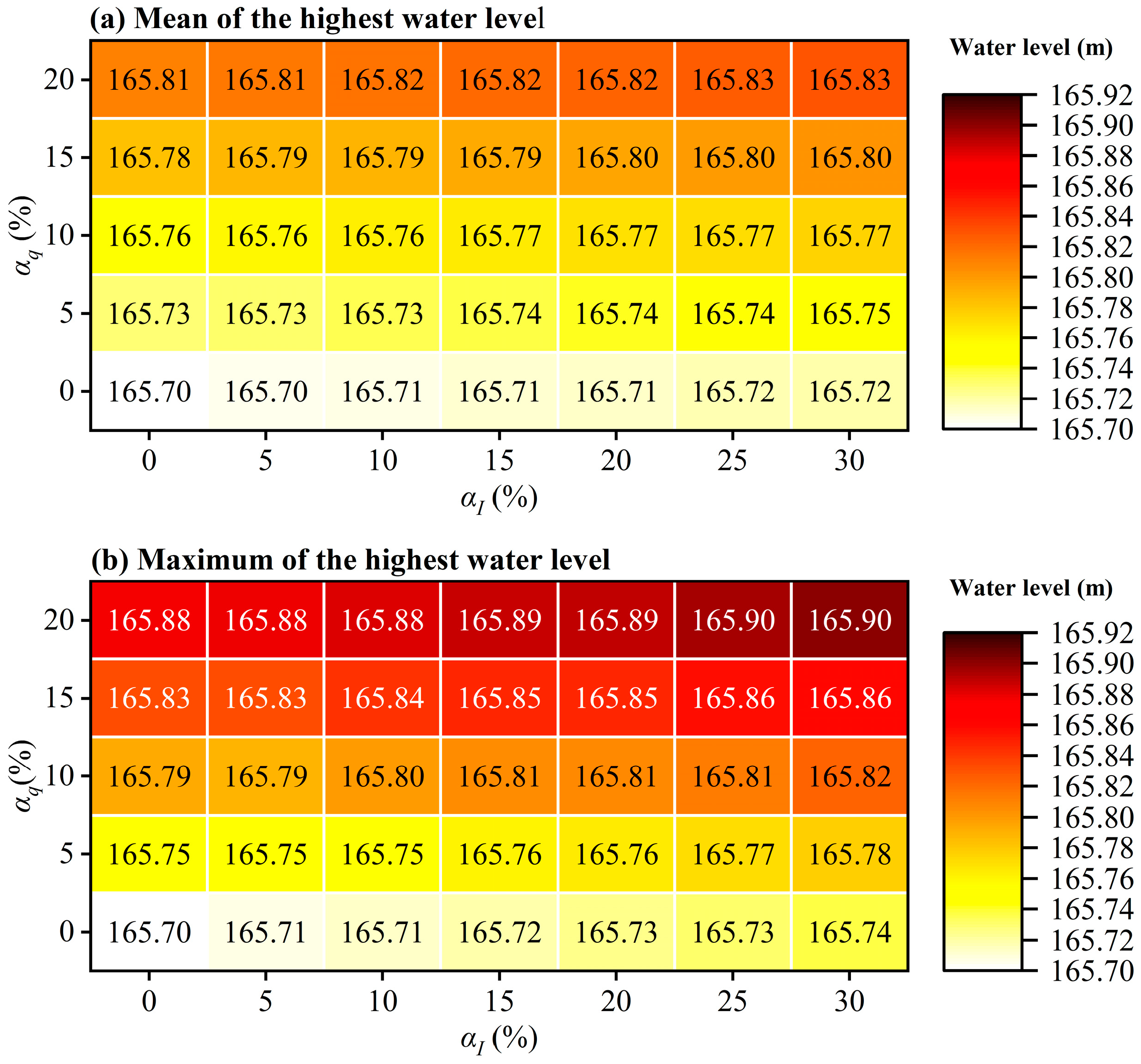
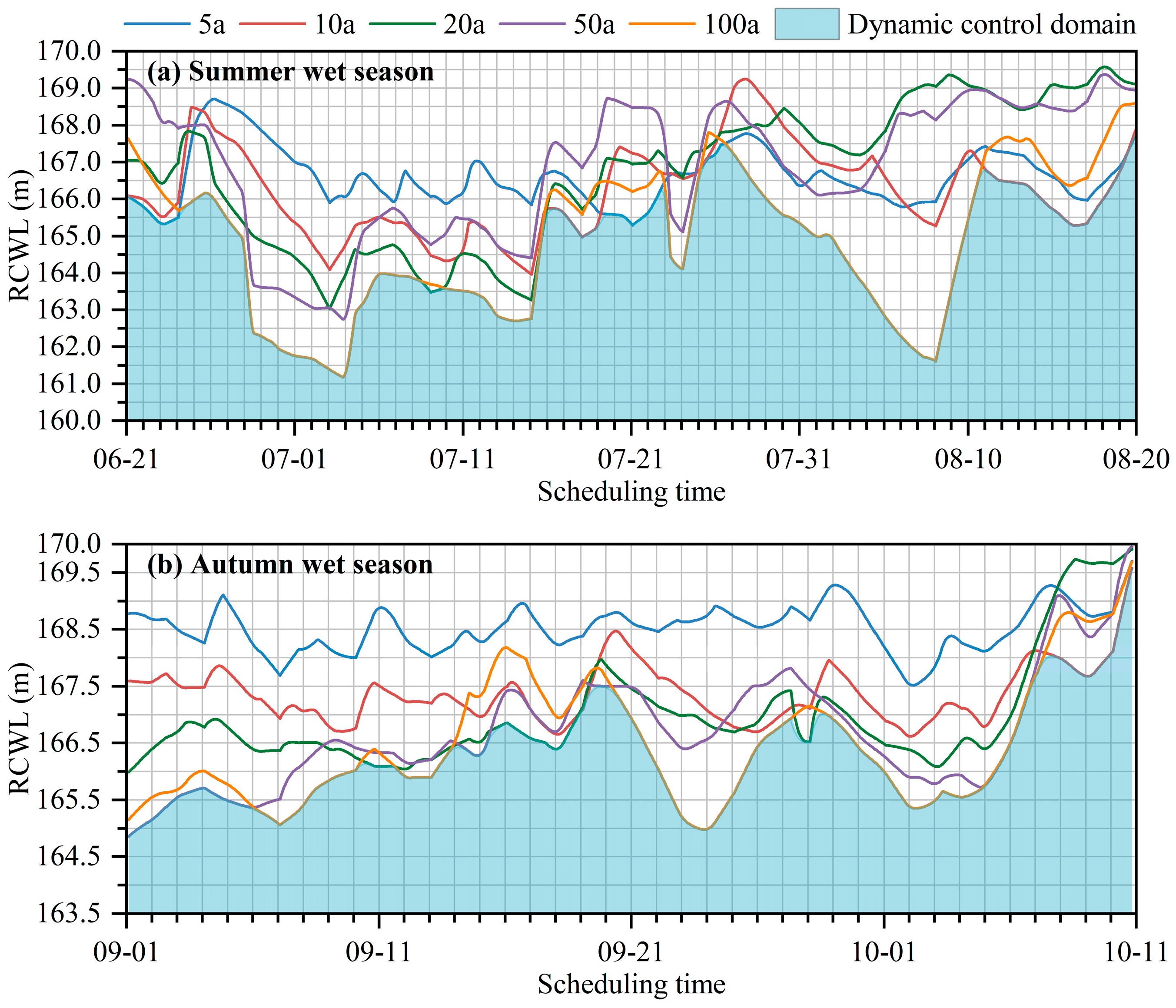
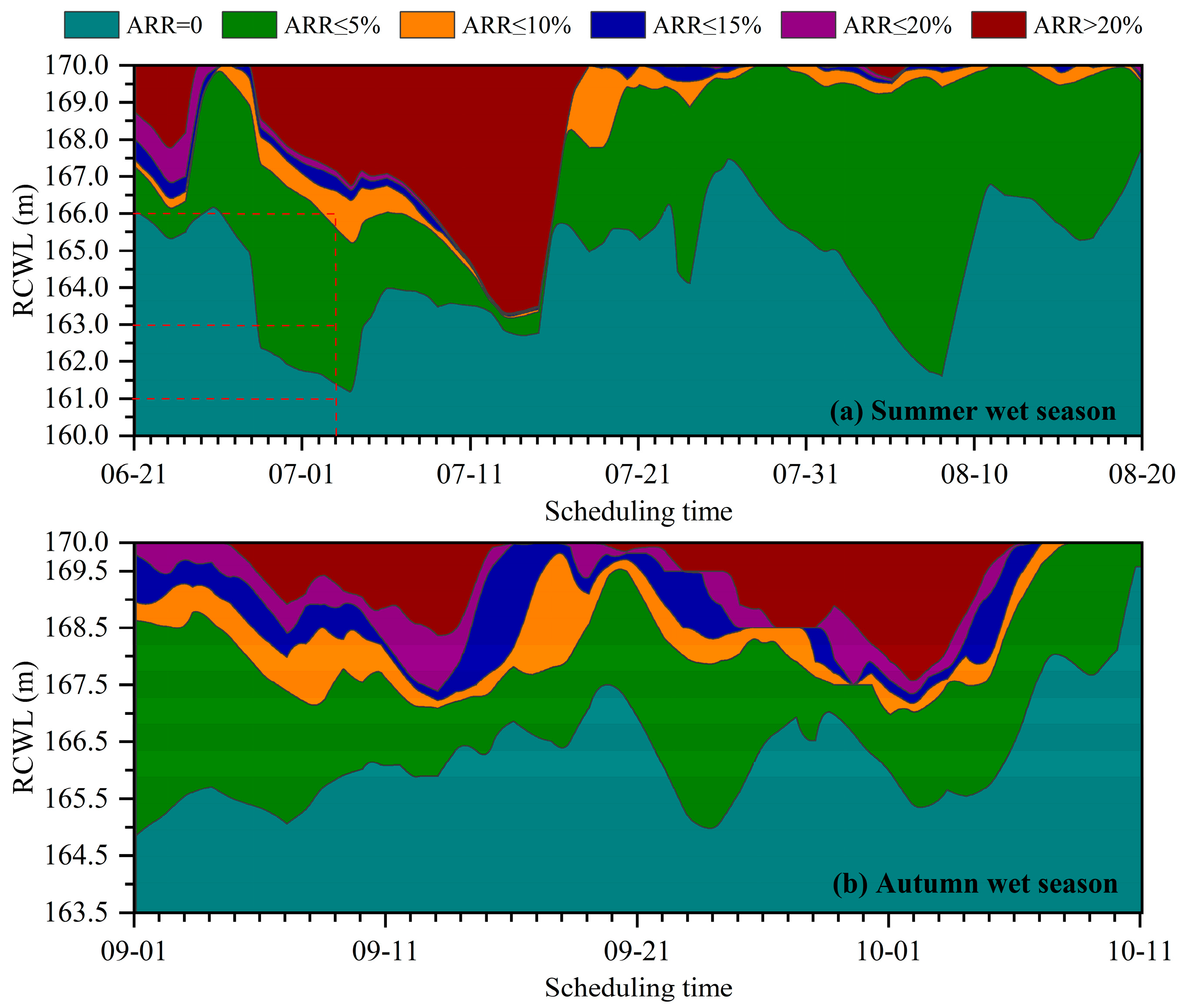
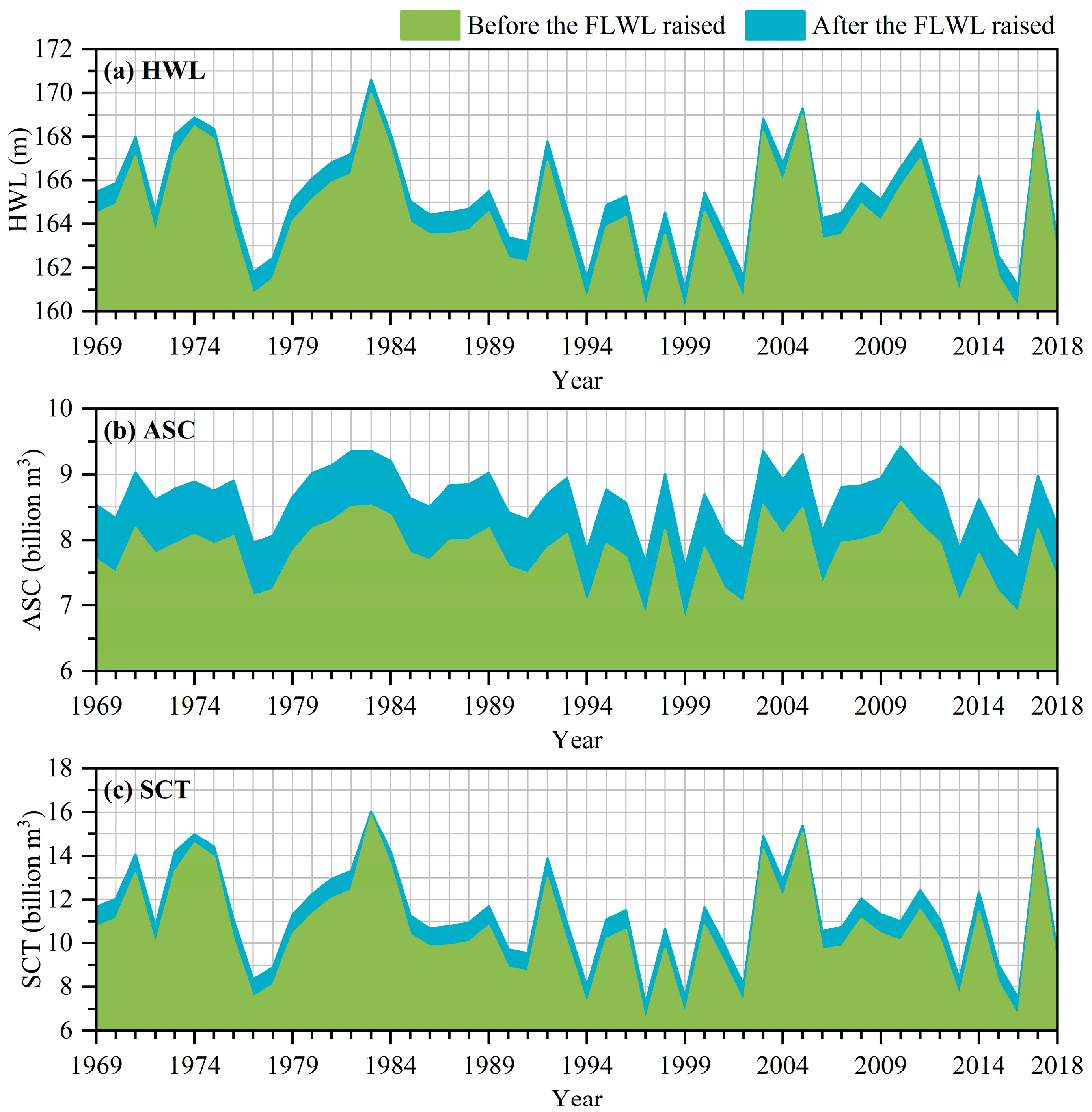

Disclaimer/Publisher’s Note: The statements, opinions and data contained in all publications are solely those of the individual author(s) and contributor(s) and not of MDPI and/or the editor(s). MDPI and/or the editor(s) disclaim responsibility for any injury to people or property resulting from any ideas, methods, instructions or products referred to in the content. |
© 2023 by the authors. Licensee MDPI, Basel, Switzerland. This article is an open access article distributed under the terms and conditions of the Creative Commons Attribution (CC BY) license (https://creativecommons.org/licenses/by/4.0/).
Share and Cite
Zhou, L.; Kang, L.; Hou, S.; Guo, J. Research on Flood Risk Control Methods and Reservoir Flood Control Operation Oriented towards Floodwater Utilization. Water 2024, 16, 43. https://doi.org/10.3390/w16010043
Zhou L, Kang L, Hou S, Guo J. Research on Flood Risk Control Methods and Reservoir Flood Control Operation Oriented towards Floodwater Utilization. Water. 2024; 16(1):43. https://doi.org/10.3390/w16010043
Chicago/Turabian StyleZhou, Liwei, Ling Kang, Shuai Hou, and Jinlei Guo. 2024. "Research on Flood Risk Control Methods and Reservoir Flood Control Operation Oriented towards Floodwater Utilization" Water 16, no. 1: 43. https://doi.org/10.3390/w16010043
APA StyleZhou, L., Kang, L., Hou, S., & Guo, J. (2024). Research on Flood Risk Control Methods and Reservoir Flood Control Operation Oriented towards Floodwater Utilization. Water, 16(1), 43. https://doi.org/10.3390/w16010043





